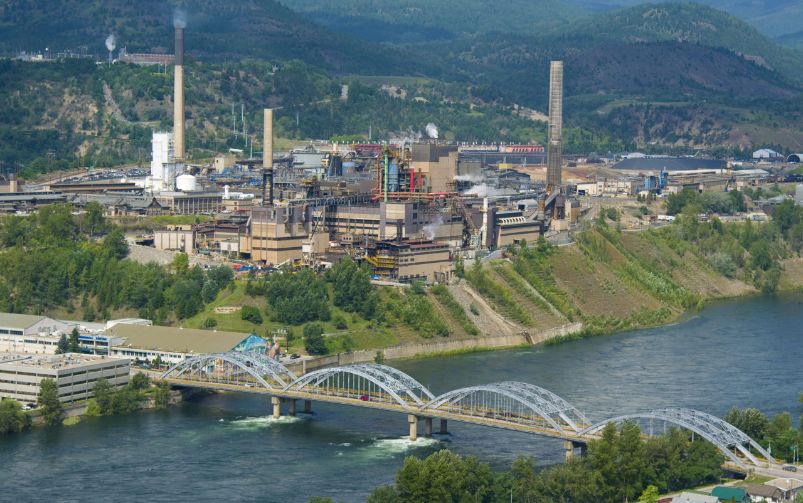Federal forest land in Arizona, crucial to Rio Tinto and BHP’s Resolution copper project, faced a temporary transfer halt this week by a U.S. appeals court. The land is considered sacred by the local San Carlos Apache Tribe. Courtesy of Rio Tinto.
Welcome back to your weekly mining news recap, where we catch you up on some of the news you may have missed. This week’s headlines include Osisko securing funding for the Cariboo project, the Sleeping Giant mill restarting after more than a decade, and a class-action suit filed against Ascot Resources.
Cenovus Energy will acquire MEG Energy in a $7.9 billion cash-and-stock deal, resulting in one of Canada’s largest oil sands producers, Reuters reported. By merging MEG’s Christina Lake operations in the southern Athabasca region of Alberta with Cenovus’s nearby assets, the companies will reach a combined oil sands output exceeding 720,000 barrels daily. The deal is set to close in the fourth quarter of this year.
BHP delayed the second phase of its Jansen potash project by two years to 2031, citing surging construction costs in Saskatchewan, CTV News reported. In July, the company reported the project’s cost had increased from US$5.7 billion to between US$7.0 billion and US$7.4 billion. The project’s Phase 1 is currently 68 per cent complete and Phase 2 is 11 per cent complete.
A U.S. appeals court temporarily paused the transfer of federal forest land in Arizona critical to Rio Tinto and BHP’s Resolution copper project, AP News reported. The San Carlos Apache Tribe argues that the land is sacred and that the review process for the transfer is incomplete. The appeals court intends to review the case later this year. U.S. President Donald Trump criticized the temporary block, calling opponents “anti-American,” after meeting with the companies’ CEOs.
Osisko Development raised US$203 million through a private placement to support the construction of its Cariboo underground gold project in central B.C., Mining Weekly reported. Delaware investment firm Double Zero Capital became a 15.4 per cent owner of Osisko with its US$75 million contribution to the non-brokered portion of the deal. Osisko projected total initial capital costs for Cariboo at $881 million, according to an updated feasibility study released in May.
Abcourt Mines isn’t content to let a sleeping giant lie, announcing this week that it restarted the mill at its Sleeping Giant gold project in Quebec’s Abitibi Greenstone Belt for the first time since 2014. According to Canadian Mining Journal, the company has invested around $42 million to restart the mill and the mine, where development work is already in progress. The mill is processing material sourced from development operations at the project, and the mill circuit is expected to be filled in the coming weeks.
A class action lawsuit filed this week claims Ascot Resources misrepresented its public disclosures regarding the Premier gold mine in B.C., Mining Weekly reported. Ascot CEO and director Jim Currie called the allegations “unfounded and without merit.” The suit follows Ascot’s February 2024 claims of secured funding and near-term production targets, later reversed when operational issues led to a pause of operations in September 2024. Work began again in December, but then the mine was put on care and maintenance in June 2025.
Tudor Gold applied for a permit to begin underground exploration at its Treaty Creek gold-copper project in northwest B.C., Canadian Mining Journal reported. The company intends to construct a ramp to provide year-round access to the project’s SC-1 zone, which will accelerate underground definition drilling.
Banyan Gold released an updated resource estimate for the AurMac gold project in Yukon. Indicated Resources are 2.27 million ounces of gold from 112.5 million tonnes grading 0.63 grams per tonne, and Inferred Resources are 5.45 million ounces from 280.6 million tonnes grading 0.60 grams per tonne.
Artificial intelligence (AI) adoption in mining will be gradual but has the potential to support operators, predict production outcomes and enable proactive maintenance, Weir Group’s Mauricio Vega told Mehanaz Yakub in a Q&A in the June/July issue of CIM Magazine. By optimizing entire circuits and integrating plant operations with mine planning, AI can reduce downtime and create real value, working alongside existing systems rather than replacing them, Vega said.
That’s all for this week. If you’ve got feedback, you can always reach us at editor@cim.org. If you’ve got something to add, why not join the conversation on our Facebook, Twitter, LinkedIn or Instagram pages?




